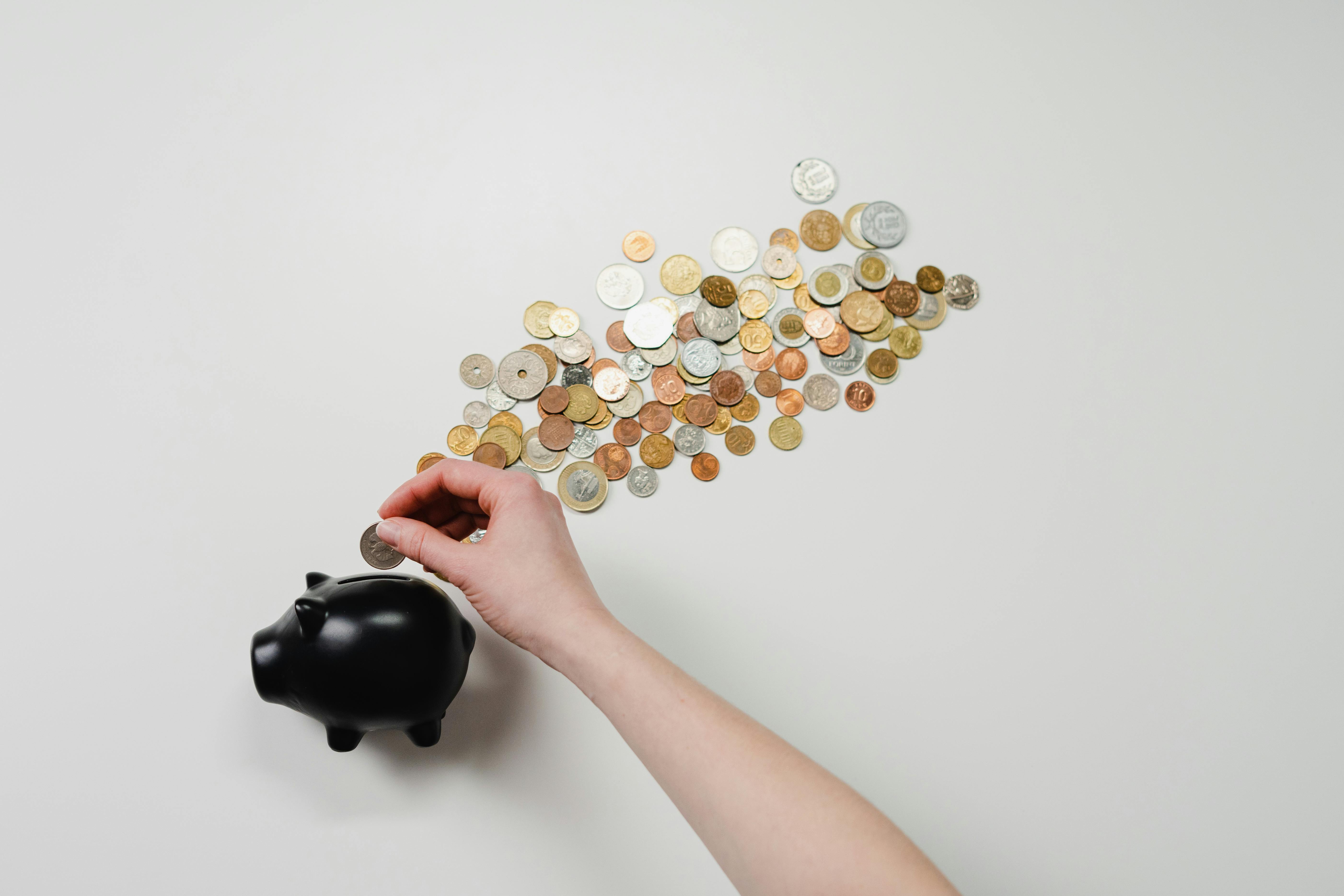How to Structure your Points and Rewards Program
Aleksandra Velkova on March 08, 2021

Just how big the importance of loyalty programs is proves the fact that a staggering 90% of businesses have some kind of a loyalty program.
From a consumer’s perspective, loyalty programs memberships are just as attractive; only in the US, there are around 3.3 billion loyalty memberships.
So is investing resources into building a lucrative points and loyalty rewards program for your e-commerce business worth it?
I think that brands like Sephora would definitely say yes!
Building your points and rewards program shouldn’t be hard; after all, you’re giving back to your customers as a form of gratitude for their loyalty and relationship with your business.
This article aims to familiarize you with the essence of a points program for e-commerce businesses, and guide you on how to build, deploy and manage one successfully.
The primary goal of running loyalty and referrals marketing is to foster a mutually beneficial relationship between you and your customers. You have your goals on one side and your customers’ goals on the other. As the driver of the program, you want to motivate customers' behavior so they can perform the actions that will bring you closer to your goals.
Motivation is key for a successful loyalty program. Human nature is simple in this aspect: if you offer a lucrative incentive, people will do the actions you ask them to do. There are many different types of incentives you can use to motivate customer behavior such as:
Soft benefits - special access to a sales event;
Various promotions sent out through most frequently used communication channels,
Complimentary products;
Strategically placed banners on your website that motivate customers to take certain actions like “Free shipping on all orders over $49” etc.
However, the most successful type of incentive that resonates the most with consumers is the point.
Roger L. Brooks argues in his book “The Power of Loyalty” that there is nothing more powerful in the world of customer loyalty than the power of the point. There are several reasons why:
Loyalty programs bring many benefits to a business:
Customer retention - when customers know they have assets with your store they’ll keep coming for more and also for rewards;
Increased revenue - a happy customer spends more and comes back frequently. Only 5% increase in retention results in an increase in sales from 25% to 95%.
Lower marketing costs - retaining existing customers is 25 times less costly than acquiring new customers.
Boost reputation and social proof - incentivize customers to leave a review, follow you on social media, read an educational article (for example on how to use your points and reward program) and more. Ultimately, these programs are designed to reward loyal customers and strengthen their bond with your brand.
You can read more about the benefits of full loyalty programs here.
How do points work?
Points are an effective loyalty currency and also a motivator that incentivizes customer behavior.
In a typical points and rewards program customers earn points for performing an action and can redeem their accumulated points for various rewards.
An important thing to remember about points is that they are essentially a promise for a future service and their value constitutes a liability for your business. A key point here is redemption, so you want to strategically set the point value as well as the redemption path as to have an optimal impact on your earnings and profitability.
With this in mind, you can motivate various types of behaviors that are beneficial for your business while setting the point value at a level that incentivizes people to buy again, refer to your business and even increase the average cart value.
Source: The Dharma Door
Build your points and rewards program
If you realized your business would definitely benefit from a structured points program - that’s great. A well-crafted e-commerce loyalty program can help increase customer lifetime value and strengthen brand engagement from the start.
We will now help you structure and deploy it as well as share some useful tips on measuring its performance and tweaking it for improvements.
Read on to get the best practices for deploying a successful points scheme.
Determine the point value of purchases
How many points should a purchase be worth?
When you think about how many points you should assign to the “make a purchase” action in your program, think about how much money you’re essentially giving back to your customers.
A decent return rate for a typical loyalty program will range between 1 - 3%. For example, if your return rate is 1%, and you’re giving 1 point per $1 spent, this means for each dollar a customer spends with you, you’re giving a cent back, which they’re accumulating in their “assets” bank.
Determine the point value of an action
You can incentivize many types of actions that customers can perform in regards to your store.
This can vary from creating an account, to subscribing to YouTube to engaging on social media channels for your store.
If you’re using Lootly to deploy your program, you can take advantage of our integration with Zapier, which allows you to connect Lootly with over 1,500 marketing apps.
When determining the point value of an action you want to take into consideration the customer acquisition cost. If you have historical data on this metric, it will help you determine how much is a particular action valuable to you. For example, if you are spending $1 for 100 impressions on Facebook, you may want to offer a $1 worth of points for a customer to share your brand on this social media channel.
Setting up your rewards
There are 2 important things to consider when setting up your rewards structure:
The types of rewards
The redemption value of your points
Types of rewards
There are many different types of rewards you can offer to your customers and what you choose will largely depend on what your customers find valuable: a percentage discount, a fixed or a variable amount off, a free product, free shipping, or even more points to add to their point bank.
Redemption value of your points
Customers redeem points for the rewards you offer, so you want to know how much is the redemption value of these points.
To calculate the redemption value of a point, simply divide the reward value in $ with the number of points required to redeem:
The redemption value of the points is essentially the money value of your points.
Measure and improve your loyalty program performance
There are multiple metrics that will tell you how well is your program performing, but in this post we’ll focus on the 2 most important ones that will signal if you need to rethink your strategy:
The redemption rate;
The breakage point.
The redemption rate;
The breakage point.
Points redemption rate
It’s imperative for customers to spend the points they earn in your program. This signals engagement with the program and repeat purchases.
The redemption rate represents how often customers spend their points for rewards at your store.
To measure the redemption rate of your program apply the following formula:
Your redemption rate may be low at the start of your program - don’t stress it, give it some time.
A solid redemption rate should be > 20%.
Points Breakage rate
The breakage rate represents the percent of points that are issued but not spent.
Naturally you want this number to be low as well.
To calculate the breakage rate use this formula:
Aim for this number to be less than 20%.
Best practices for deploying an effective points program
Once you have designed your points strategy and established the goals you wish to achieve, follow these best practices to easily deploy your program on your e-commerce site.
Find a complete rewards program software
If building your own program host for your e-store seems like a huge investment in resources, then you can look for a loyalty program provider that will allow you to deploy your program easily. Look for a loyalty provider that has a complete offer and can meet your needs in terms of program and budget.
Source: Lootly
Know your customers
Loyalty marketing is about building a mutually beneficial relationship. If you don’t know what your customers want, what they find valuable and what makes them happy then you’re risking the effectiveness of your strategy. Research thoroughly their buying habits, the buying frequency and the average order value.
Let them see value fast
Not seeing value fast enough can cause your customers to think that it’s not worth engaging with your program. Make sure they see value from the moment they sign up for an account on your website.
Give rewards that are valuable and easy to redeem
If you give bad rewards ( these usually have a high profit margin for you, but are really not valuable for customers) customers won’t bother much to redeem points for it. Remember, this should be something they desire and find valuable. Also, if you make it super hard for customers to redeem for a reward you won’t see a lot of positive results. Redemption should be easy and incentivizing, not an impossible task.
Make sure your program is visible
Program visibility is super important because you don’t want your customers to not even know they own points in your store. A well designed rewards page that houses your program offering and rules will inform and guide your customers. This page should accompany your promotion efforts which should aim to spread the word about your program and its value. If you’re building your program with a rewards program software like Lootly, you can take advantage of the various design options to create a custom rewards page for your brand.
Source: I Love Linen
Make sure your program is fully visible and easy to engage with on a mobile device. Your customers are buying on their mobile phones, so you want them to know and be able to see their points when they sign into their accounts on the phones.
Company-wide acceptance of the loyalty strategy
Loyalty is a philosophy, not just a marketing strategy. Make sure your entire company is on board with what you’re trying to do here, which essentially is building a loyal customer base. Educate your customer support team to emphasize the program, its value and its offering every time they talk to customers.
To wrap it up…
In a highly competitive business world, one successful distinction can make or break your e-commerce business. With a strategically deployed points and rewards program you can grow your business in every aspect: customers, profits and even foster a brand community of advocates and aficionados.
A loyal customer base is not just a nice-to-have, it’s a must have.
By knowing what to offer and how to keep your customers engaged with your offering, you can assure your business thrives on loyalty for a long time to come.

Aleksandra Velkova
Aleksandra is the Customer Success Manager at Lootly
Grow your brand with Lootly
Whether you are looking to acquire new customers, increase customer loyalty, or drive
new DTC subscriptions, Lootly’s retail loyalty program software can help growing B2B, B2C, and D2C businesses.